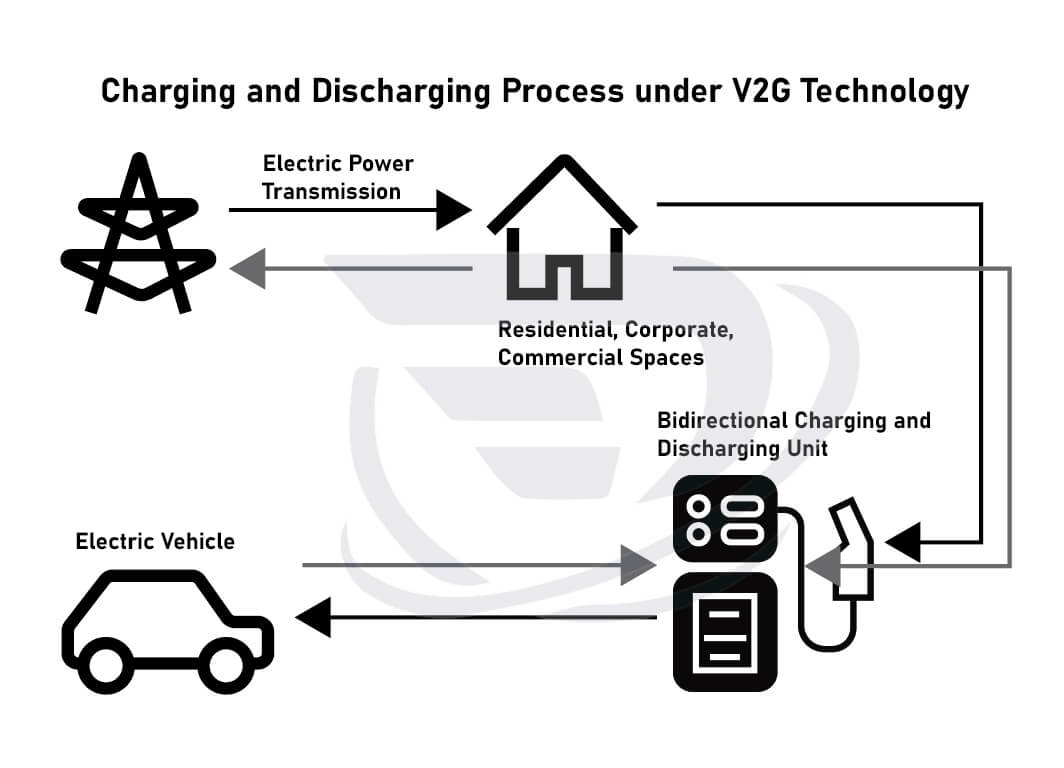What is V2G Charging?
V2G stands for Vehicle-to-Grid, describing a novel energy system that utilizes bi-directional charging ports connected to homes. These ports link battery electric vehicles (BEVs) or plug-in hybrid electric vehicles (PHEVs) to the grid, enabling these electric vehicles not only to draw energy from the grid but also to feed excess energy back into it.
V2G charging refers to the use of bi-directional EV chargers (DC to AC conversion systems) to supply power from EV batteries to the grid. V2G can assist in balancing and addressing local, regional, or national energy needs through intelligent charging.
The Principle of Two-way V2G Charging
The core idea behind V2G is to harness the energy stored in electric vehicle batteries when they are not in use and charge or discharge them as needed. When charging electric vehicles, they receive alternating current (AC) from the grid, which is then converted into direct current (DC) (either by an in-vehicle converter or an external charger). To utilize the energy stored in the EV battery to power a home or return it to the grid, the DC power from the vehicle must be converted back into AC, a task accomplished by the bi-directional charger. Two-way charging is particularly effective when supplemented with solar power, as it can generate additional energy during periods of strong sunlight.

Advantages of Two-way V2G Charging
1. Large energy storage capacity in EV batteries, capable of storing up to 10 times more energy than typical 7 KWH lithium-ion batteries commonly found in residential solar photovoltaic systems.
2. Cost savings and efficiency enhancements for EV owners through rewards or reduced energy costs. Charging vehicles during off-peak hours at the lowest rates and feeding power back into the grid during peak-rate energy times can reduce overall energy expenses.
3. Alleviates grid stress during high-demand periods, such as heatwaves.
4. Increases energy efficiency by reducing reliance on the grid, particularly when combined with rooftop solar panels. New business models and partnerships promote the use of renewable energy and selling excess power back to the grid.
Disadvantages of Two-way V2G Charging
1. Limited availability of wall boxes in the market, leading to reduced competition in terms of pricing and choices.
2. Higher costs compared to standard EV chargers.
3. Currently advantageous mainly when charging at home or using dedicated workplace chargers.
4. Overusing the vehicle’s battery may lead to premature aging.
5.Safety concerns remain to be addressed.